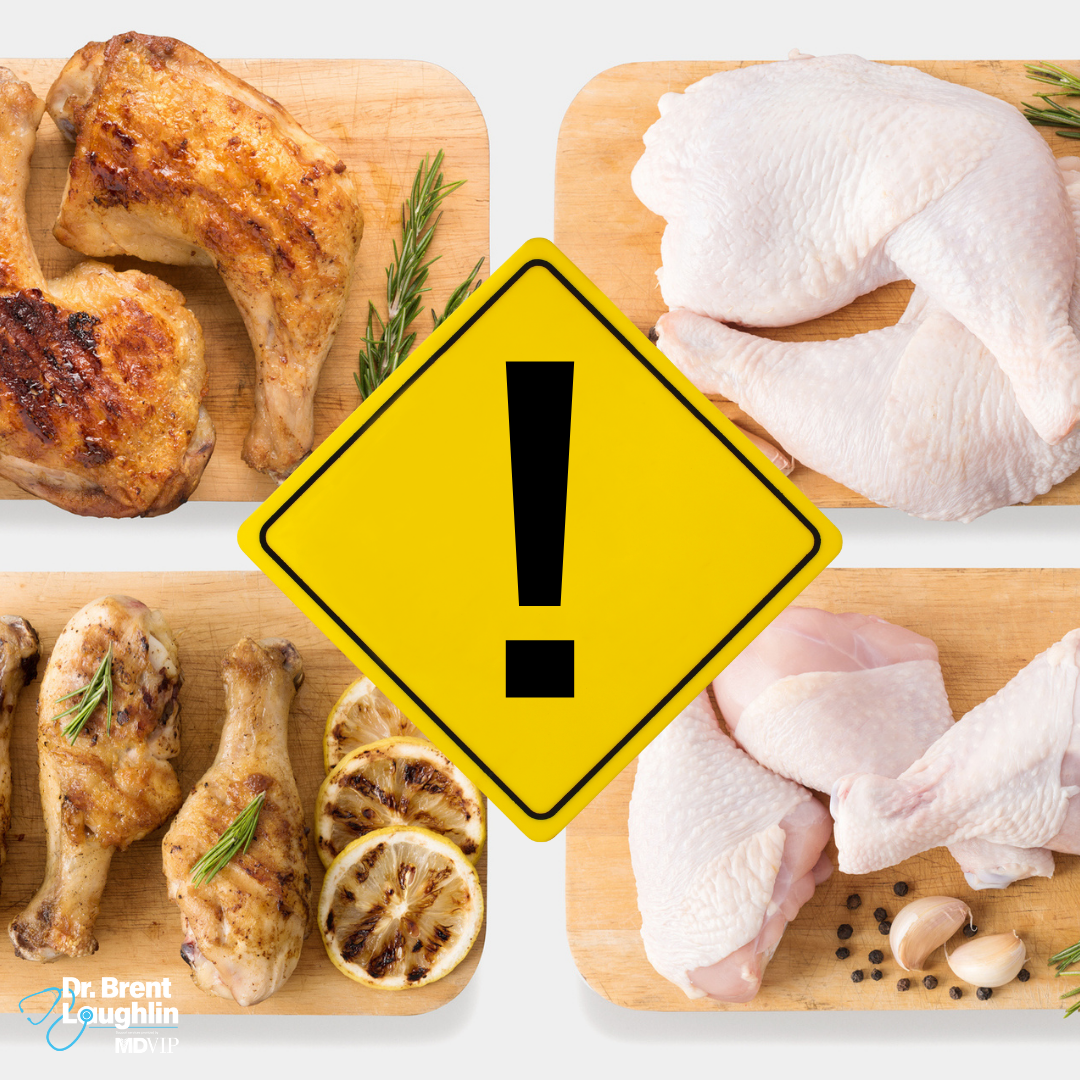Eating raw or undercooked meat is something most people don’t worry too much about, but it can happen from time to time. Whether you’re being adventurous for your next meal or chowing down on some chicken that needed a little more time on the grill, it’s a danger you need to keep in mind.
To better understand the dangers of eating raw or undercooked chicken and what you can do to protect yourself, we spoke with registered dietician Mia DiGeronimo, RD.
Why you shouldn’t eat raw or undercooked chicken
Despite whatever reason you may hear, you should never eat raw or “rare” chicken. “Raw chicken can have bacteria that can cause food poisoning,” says DiGeronimo. The most common bacterial food poisoning from chicken include:
And food poisoning isn’t just a brief thing, either. Symptoms can begin within a few hours of consuming the food and, depending on the bacteria, DiGeronimo notes, the illness can last up to a week.
“Symptoms of food poisoning can include fever, stomach cramping, diarrhea, and sometimes nausea and vomiting,” she says. Plus those symptoms – particularly diarrhea and vomiting – can lead to dehydration, too, so drink plenty of water.
Additional dangers
But there’s a possibility of even more lasting damage, depending on your immune system. “Patients with weakened immune systems, such as those with a diagnosis of AIDS or those going through chemotherapy, can have worsened symptoms and more severe complications from food poisoning,” says DiGeronimo.
“Depending on the bacteria, you may need an antibiotics prescription, too,” she adds. “Patients can get a stool test done to determine what type of bacteria it is.” Bacteremia – where bacteria spread to different parts of the body via your bloodstream – is also a danger, particularly for those with immunity issues.
How to protect yourself against food poisoning
The big thing about protecting yourself from food poisoning, DiGeronimo says, is making sure you cook your chicken to an internal temperature of 165 F. Don’t just trust your instincts when cooking; use a clean meat thermometer for accurate temperature readings.
Besides properly cooking your chicken, though, there are other ways to make sure your chicken stays fresh.
How to properly store raw chicken
If you’re refrigerating raw chicken, keep it in its original packing for no more than two days, says DiGeronimo. “Store your raw chicken on the bottom shelf of the refrigerator, away from any fresh fruits, vegetables and other foods,” she says.
If you’re storing your chicken longer than two days, it’s best to freeze it, she adds. And, yes, you can freeze it in its original packaging. Just be sure to thaw it out over time in your refrigerator and cook it as soon as it’s thawed.
How long until raw chicken goes bad?
“Your raw chicken should stay fresh up to two days in the refrigerator (at or below 40 F) but up to one year in the freezer (at 0 F),” says DiGeronimo.
And how long can raw chicken sit out of the refrigerator when you’re preparing it or grocery shopping? Ideally, DiGeronimo says, you should get your perishable items into your fridge as soon as possible. Sometimes, though, you might have to make multiple stops on a grocery run and you can’t get your chicken into the fridge right away.
If that’s the case, or if you just happen to accidentally leave your chicken out on the counter once you get home, you still have some time. “It’s safe to leave items needing refrigeration out on the counter at room temperature for up to two hours,” she says.
How can you tell when raw chicken has gone bad?
Raw chicken should be cold to touch when buying at the store or before cooking at home, says DiGeronimo. The chicken should also be pink and moist – but not slimy. If the color of your chicken is off or it’s slimy, that’s a sign it’s gone bad.
And, of course, there’s the smell test. Fresh raw chicken should have a slight smell, but if it’s a funky, rotten odor, you need to ditch that fowl meat.
To ensure your chicken doesn’t go bad, don’t thaw it in the sink or on the counter. “The best way to thaw chicken is in the refrigerator, in cold water or the microwave,” she says.
Source: http://feedproxy.google.com/~r/ClevelandClinic/HealthHub/~3/iEdG3LsZjDE/



